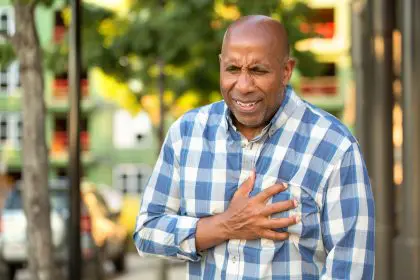When people think of sexually transmitted diseases (STDs), they often picture younger people. However, the reality is that older adults are also at risk, and surprisingly, this demographic may be more vulnerable than most realize. Increased dating in senior communities, longer life expectancies and diminished concerns about pregnancy have contributed to a rise in STD rates among older adults.
This article will highlight seven sneaky STDs that older adults often overlook and explain why it’s crucial to recognize the symptoms and seek treatment.
1. Herpes simplex virus (HSV)
HSV, commonly known as herpes, is one of the most prevalent STDs worldwide. For older adults, it can be easy to overlook due to its episodic nature and mild symptoms. Herpes manifests as painful sores, but they might not always appear in a way that is noticeable or alarming.
Symptoms in older adults are sometimes misattributed to other skin issues or stress-induced ailments, leading to the virus being dismissed as something harmless. This lack of attention can result in it spreading unknowingly to others and increase the risk of flare-ups over time.
Quick tip: Don’t brush off any recurring itching, burning or painful sores as “just age.” Seek medical advice promptly to ensure proper care and management.
2. Human papillomavirus (HPV)
HPV, or human papillomavirus, is another STD that often flies under the radar among older adults. It’s estimated that millions live with the virus, many of whom may be unaware of it. HPV can lead to genital warts and, more alarmingly, has links to certain cancers, such as cervical, throat and anal cancers.
One reason it goes unnoticed in older adults is that it can remain dormant for years. For those who were sexually active earlier in life, the virus may only manifest later on, presenting symptoms that are easily mistaken for other age-related issues.
Health note: Regular checkups and screenings are essential. While there’s no direct test for HPV in men, women can be screened for HPV-related issues during pap smears.
3. Chlamydia
Chlamydia is often known as the “silent” STD because it rarely shows symptoms. However, when symptoms do occur, they may be mistaken for other conditions like urinary tract infections or general discomfort due to aging. This bacterial infection is not to be underestimated, as it can lead to pelvic inflammatory disease (PID) in women, which can have serious health repercussions.
Older adults may not consider the possibility of having an STD like chlamydia because they assume these are concerns for the younger population. However, the rates of chlamydia among seniors have been on the rise, and it’s one of the most underdiagnosed STDs.
Preventive measure: Get tested regularly, especially if you’re dating again or have new sexual partners, regardless of age.
4. Gonorrhea
Gonorrhea is another STD that is sneaky in its ability to mimic other common conditions. Symptoms can include discharge, burning during urination and pain, which can easily be mistaken for age-related urinary issues. Because older adults might chalk these up to regular health changes, they may miss the signs and spread the infection unknowingly.
The increase in gonorrhea cases among seniors points to a need for more open discussion and education about sexual health. Awareness and early treatment are crucial since untreated gonorrhea can lead to joint pain, blood infections and even infertility.
Encouragement: If something feels off, it’s worth getting it checked out. Sexual health is part of overall well-being at any age.
5. Syphilis
Syphilis, historically known as “the great imitator,” can produce symptoms similar to a range of other diseases, making it tricky to diagnose. Initial signs include painless sores that often go unnoticed. If untreated, syphilis progresses through different stages, eventually causing serious damage to the heart, brain and nerves.
Older adults might dismiss early syphilis symptoms as nothing more than minor irritations or signs of aging. Unfortunately, syphilis is often only discovered in its later, more dangerous stages in this demographic.
Health tip: If you’re in a new relationship or notice any unexplained sores, rashes or fatigue, ask your doctor about syphilis testing.
6. HIV/AIDS
HIV/AIDS is an STD that many assume only affects younger people or specific populations, but older adults are not immune. Seniors may not see themselves as being at risk and, therefore, do not take the necessary precautions. Furthermore, the symptoms of HIV, such as weight loss, fatigue and cognitive decline, can be mistaken for normal aging.
The key to managing HIV is early detection and treatment. Today, there are effective treatments that allow people living with HIV to lead long, healthy lives. However, ignoring the signs or avoiding testing due to stigma or misconceptions can lead to severe health issues and complications.
Empowering note: Testing is a responsible choice, and living with HIV today is far different from decades past, thanks to advancements in medicine.
7. Trichomoniasis
Trichomoniasis, or “trich,” is an STD caused by a parasite. It’s commonly overlooked in older adults because its symptoms can be mistaken for other vaginal or urinary tract issues. The infection can cause discomfort, itching and discharge, but not everyone will experience symptoms.
It’s easy to see how trichomoniasis might be brushed aside as a minor irritation or an age-related discomfort. However, untreated trich can increase the risk of contracting other STDs and lead to complications during sexual activity.
Action step: Even if you don’t experience symptoms, if you have new sexual partners or changes in your health, getting tested can prevent complications and improve your quality of life.
The importance of open communication and testing
For older adults, the stigma and lack of awareness around sexual health can create a barrier to getting tested, communicating with partners and seeking appropriate care. It’s vital to break down these barriers and understand that sexual health is important at every age.
Whether it’s regular health checkups or having open discussions with health care providers, taking action to understand and treat STDs can greatly improve well-being. Just because someone is older doesn’t mean they’re immune to the risks associated with these diseases. The sneaky nature of these infections only underscores the importance of awareness, prevention and prompt treatment.
Sexual health doesn’t have an age limit. Staying informed, getting regular checkups and encouraging dialogue can protect you and your partner, enhancing your quality of life and ensuring long-term health and happiness.
This story was created using AI technology.






